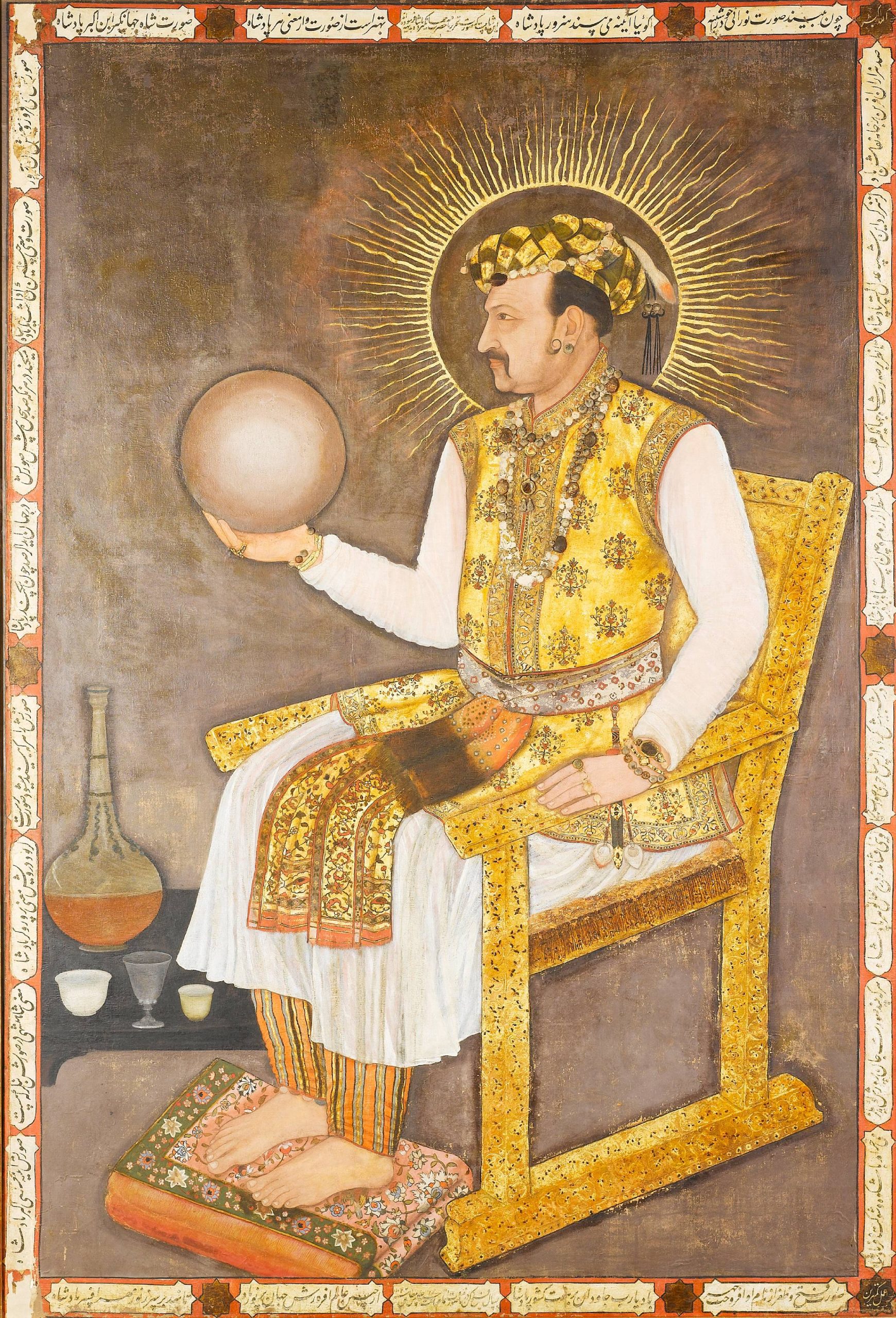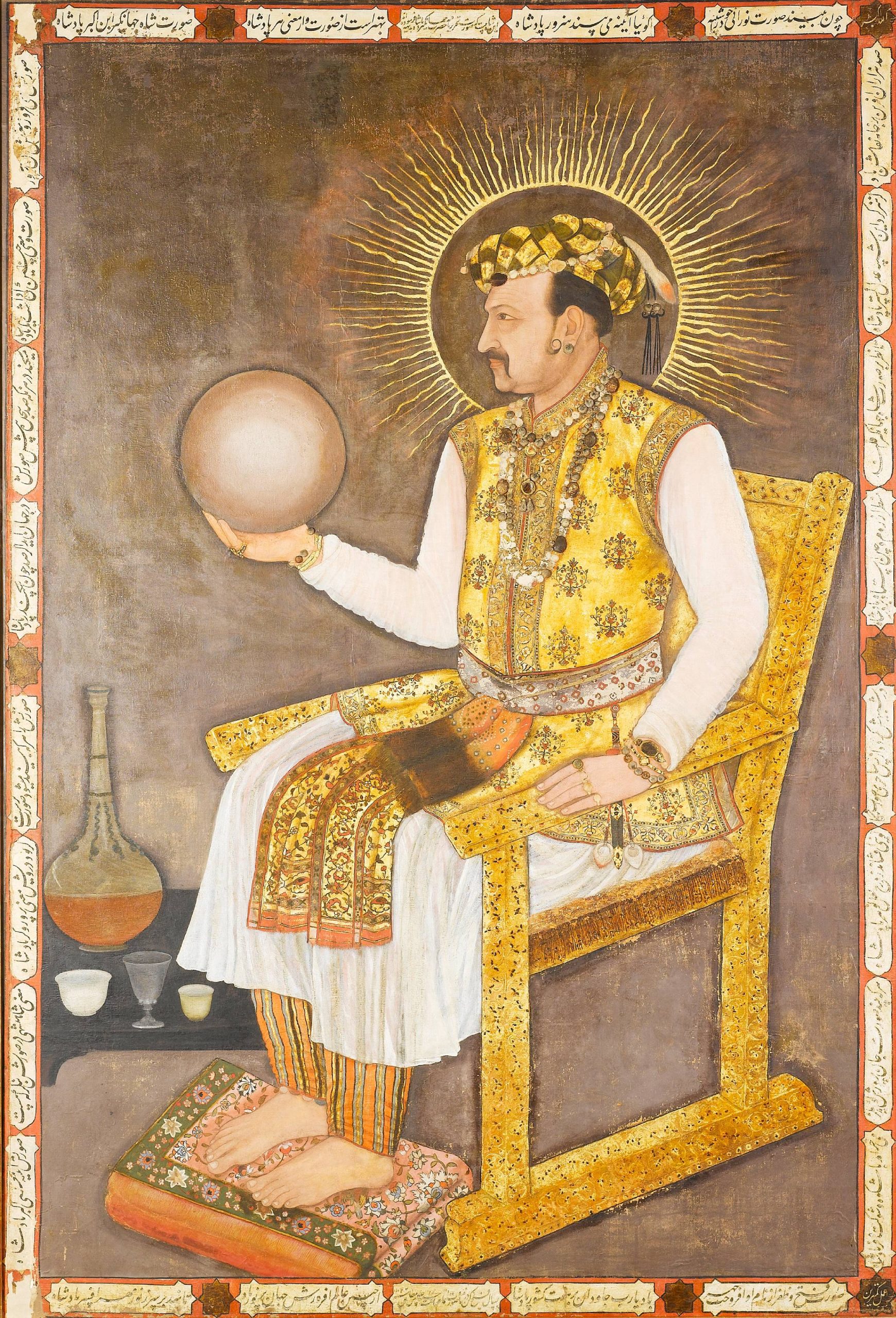
Woah, now that’s a conversation starter if ever I saw one! This unique lifesize portrait of the Mughal Emperor Jehangir is estimated to go for £1M at Bonham’s India and Islamic sale on April 5th. The largest known Mughal painting is in the style of a European portrait of the early 17th century. The auction is scheduled to take place at New Bond Street, London and online on 5th April, 10.30am (Islamic Art) and 2.30pm (Indian Art).
It is a painting of the Mughal Emperor Jahangir who ruled India 1605-1627 and is attributed to the Mughal artist Abul Hasan, Nadir al-Zaman or “Wonder of the Age”. Previously shown in the National Portrait Gallery in an exhibition on the Indian Portrait in 2010, the Emperor is shown seated on a gold decorated throne holding a globe, wearing elaborate robes and jewellery. The surrounding Persian inscription states it was painted at Mandu in the AH1026/AD1617.
Alice Bailey, Head of Indian and Islamic Art at Bonhams comments: “This is one of the rarest and most desirable 17th century paintings ever to come to auction. There is no other work of its kind known and its importance cannot be underestimated. The extraordinary detail and complexity of the painting both fascinate and bewitch the viewer.’ I don’t know much about but for £1M it damn well better bewitch the viewer! Perhaps this will compel you to cash in those FDs.
Things I Bet You Didn’t Know About Jahangir!
Jahangir was born on 31st August, 1569 and was named Nuruddin Salim Jahangir. Nuruddin has been derived from Arabic which means “light of faith”. Jahangir is a Persian word which means “world conqueror”.
At the age of four he was taught Turkish, Urdu, Persian, Arabic, Arithmetic, Geography, History, Sciences, etc. At a very young age, he was given the rank of a Mansabdar of ten thousand, which is the highest rank in military after the Emperor. At the mere age of twelve, he commanded a regiment independently in the Kabul campaign.
He succeeded Akbar to the throne after killing his brothers.
He was famous for his “Chain of Justice”, which was a golden chain attached to some bells outside his palace. Anyone in despair could pull the chain and go in for a personal hearing from the emperor himself.

